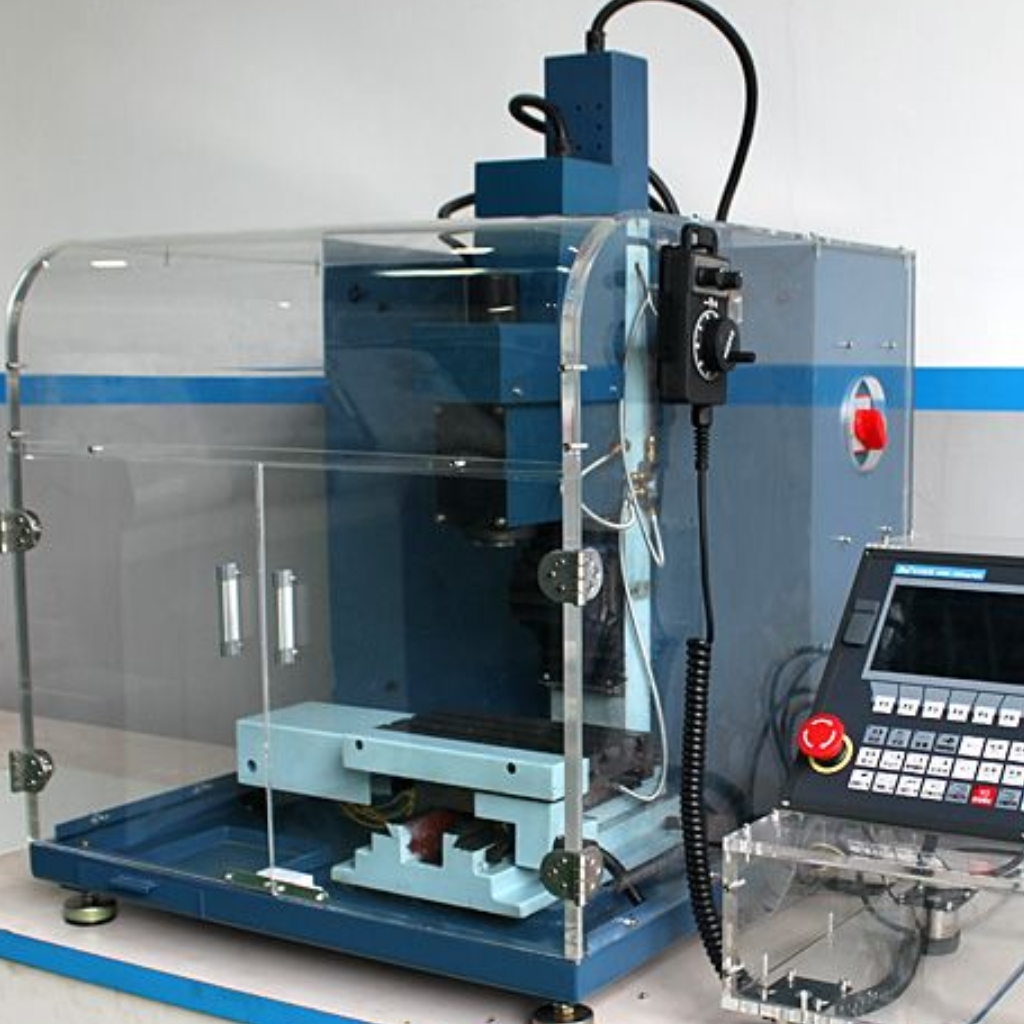When you think of a lathe, turning, facing, and threading are usually the first operations that come to mind. However, a lathe is an incredibly versatile machine tool capable of performing precise drilling operations with exceptional accuracy. For mechanical, educators, and professional machinists, mastering lathe drilling is a fundamental skill. It ensures that holes are perfectly concentric to the workpiece's axis, a result that can be challenging to achieve with a handheld drill. This guide will walk you through the essential steps and best practices for drilling accurate, clean holes using a lathe, highlighting how the right equipment, like precision mini lathes, makes all the difference.

The Core Principles of Lathe Drilling
Drilling on a lathe is fundamentally different from using a drill press. The lathe holds the workpiece and rotates it against a stationary cutting tool—in this case, the drill bit, which is held in the tailstock. This method guarantees that the hole will be drilled exactly on the centerline of the workpiece, provided the setup is correct. The process involves securing the workpiece in the headstock (using a chuck or between centers), mounting the drill bit in the tailstock, and then advancing the quill of the tailstock to feed the drill into the spinning workpiece.
Step-by-Step Guide to Drilling on a Lathe
1. Preparation and Safety First
Before beginning, always prioritize safety by wearing certified safety glasses and tying back long hair or securing loose sleeves. Your primary task is to ensure the workpiece itself is ready. Securely clamp it in the headstock chuck and verify that it is properly seated and rotates without significant runout.This is typically simple for standard round stock. However, if you are working with an irregularly shaped piece, a four-jaw chuck will be necessary to make individual adjustments for perfect alignment. An essential preparatory step is to create a starting point using a center drill. This specialized, short, and robust tool makes a shallow pilot hole that acts as a precise guide for the subsequent drill bit, effectively eliminating any risk of wandering and guaranteeing a perfectly on-center start.
2. Selecting and Mounting the Drill Bit
Choose the correct twist drill bit for the material and the desired hole size. For larger holes, it's often more efficient to drill a pilot hole first (e.g., 1/4") before moving to the final size. This reduces the thrust force required and improves accuracy. Insert the drill's shank into a drill chuck, which is then securely mounted into the tailstock's quill. Ensure it is tightened firmly to prevent slipping. For larger drill bits with a Morse taper shank, they can be inserted directly into the tailstock barrel if the taper matches.
3. Setting the Speed and Feed
Proper speed (RPM) is critical for a good finish and tool life.
Material Matters: Softer materials like aluminum and plastics can handle higher RPMs, while harder materials like steel require slower speeds.
Drill Bit Size: Larger diameter drill bits must run at slower speeds than smaller ones. A good rule of thumb is that the larger the bit, the slower the RPM.
Consult a speed and feed chart for specific recommendations. As for feed, advance the tailstock handwheel at a steady, consistent pace. You will feel the resistance; a continuous curl of chip indicates a good feed rate. Avoid forcing it, as this can break the drill bit, or too slow a feed, which can work-harden the material and dull the bit.
4. The Drilling Process
Bring the tailstock forward until the drill bit is just touching the center-drilled hole. Start the lathe at your chosen RPM. Use the tailstock handwheel to advance the drill bit smoothly into the workpiece.
Peck Drilling: For holes deeper than twice the drill diameter, use a "pecking" motion. Advance the drill a short distance, then retract it slightly to break the chip and clear swarf (metal chips) from the hole. This prevents the flutes from clogging, reduces heat buildup, and allows cutting fluid to reach the tip, resulting in a better finish and longer tool life.
Use Cutting Fluid: When drilling metals, regularly apply an appropriate cutting fluid or oil. This lubricates the cutting action and cools the drill bit, significantly improving performance and finish.
5. Finishing and Deburring
Once you have reached the desired depth, retract the drill bit from the hole while the lathe is still spinning. This helps clean up the inside of the hole. After stopping the lathe, remove the workpiece from the chuck. You will likely have a sharp burr on the edge of the hole. Remove this carefully with a deburring tool or a countersink bit for a professional, safe finish.
Why Precision Equipment is Key
The quality of your drilling operation is directly tied to the precision of your lathe. A poorly made lathe with a tailstock that doesn't align perfectly with the headstock will produce off-center holes every time. This is where Xendoll Tools excels. Our range of mini benchtop lathes is engineered for exceptional accuracy and rigidity. Features like a hardened and ground bedways, a precisely aligned tailstock, and a powerful motor ensure that every drilling, turning, and facing operation is performed to the highest standard. For educational labs, hobbyist workshops, and professional toolrooms, our machines provide the reliability needed for perfect results.

Conclusion: Unlocking Versatility with Your Lathe
Drilling on a lathe is not just a workaround; it is the preferred method for creating precise, concentric holes in turned parts. By following these steps—prioritizing safety, always center drilling, selecting correct speeds, using a pecking motion, and applying coolant—you can master this essential technique. It unlocks a new level of capability in your machining projects, allowing you to create complete components from start to finish on a single machine.
For details, please refer to the following link:https://www.xendolltools.com/category/micro-cnc-machine.html
 Sep 10, 2025
Sep 10, 2025

 610
610



 Show all our samples
Show all our samples
 Provide you with a free quote
Provide you with a free quote
 Answer all the questions you may have
Answer all the questions you may have
 Guided installation and other options
Guided installation and other options